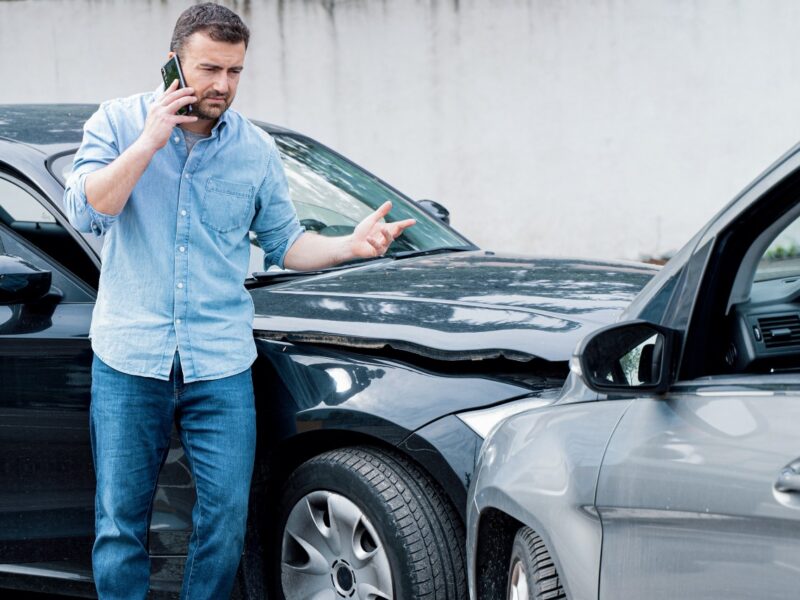You’ve been in a car accident. The damage is repaired, your vehicle looks as good as new, but it’s not. If you tried to sell it tomorrow, its value would likely be lower than it was before the crash. Even with high-quality repairs, a vehicle that’s been in an accident almost always suffers a loss in resale value.
That drop in value is called depreciation or diminished value—and if someone else caused your accident, you may be wondering: Can I claim that loss from the at-fault party’s insurance?
In California, the answer is yes, in certain situations. In this article, we’ll break down how depreciation claims work after a car accident, when they apply, how much you can potentially recover.
What Is Vehicle Depreciation After an Accident?
Even after professional repairs, your car isn’t worth what it was before the crash. That’s because once it’s been in an accident, it’s flagged on vehicle history reports (like Carfax), which affects its market value. Buyers are often hesitant to pay top dollar for a vehicle with a collision in its past—even if it looks perfect.
This loss in value is known as diminished value, and it’s a real financial consequence of an accident that many drivers don’t think about—until it’s too late.
Can You Claim Depreciation in California?
In short: yes, but only under certain circumstances.
In California, you may be able to file a diminished value claim with the at-fault driver’s insurance company. This is called a third-party claim, and it’s your legal right under California negligence and property damage laws.
However, if you’re filing a collision coverage claim through your own insurance policy (known as a first-party claim), most auto insurance policies in California do not cover diminished value—unless your policy specifically states otherwise.
To successfully claim depreciation, the car accident typically must have been caused by someone else.
Types of Diminished Value
There are three types of diminished value you might encounter:
- Immediate Diminished Value
The reduction in your car’s resale value immediately after the accident but before repairs. This type is rarely claimed. - Inherent Diminished Value
The most commonly claimed type. This refers to the reduction in value even after quality repairs, simply because the car now has an accident history. - Repair-Related Diminished Value
When the vehicle loses value due to poor-quality repairs or the use of aftermarket parts instead of original manufacturer parts.
Most depreciation claims focus on inherent diminished value, which is widely recognized by insurers and auto valuation professionals.
When Can You Make a Diminished Value Claim?
You may have a strong claim for diminished value if:
- You were not at fault for the accident
- Your vehicle was repaired after the crash
- The vehicle was newer or in excellent condition prior to the accident
- The damage was significant enough to affect resale value
- The at-fault party is insured
On the other hand, a depreciation claim may not be successful if:
- You were at fault for the accident
- Your car was older, high-mileage, or had previous accident damage
- You’re filing with your own insurance and your policy excludes depreciation
- The damage was minor or purely cosmetic
How to Prove Vehicle Depreciation
Proving a diminished value claim usually requires more than just pointing out that your car was in an accident. You’ll need to support your case with evidence, such as:
- A written professional appraisal from an expert in vehicle valuations
- Pre-accident and post-repair market value comparisons
- Repair invoices showing the extent of the damage and parts used
- Vehicle history reports (like Carfax) confirming the accident
- Evidence of the vehicle’s pre accident condition (when available)
Some vehicle owners use services like Kelley Blue Book or NADA Guides to estimate pre-accident value and then compare that to appraisals of the vehicle’s post-repair value in the local market.
The more documentation you can gather, the stronger your case will be.
How Much Can You Recover?
There’s no fixed formula for determining diminished value—it depends on several factors, including:
- The year, make, and model, of your car
- Mileage and condition before the accident
- Severity and location of the damage
- Quality of the repairs
- The current market demand for your vehicle
As a general rule, the newer and more valuable the vehicle is, the more significant the depreciation is after an accident.
Example:
Let’s say your car was worth $35,000 before the accident. After repairs, its market value drops to $28,000 due to the accident history. Your diminished value would be $7,000—and that’s what you could claim from the at-fault party’s insurance.
Tips to Strengthen a Depreciation Claim
If you’re thinking about pursuing a depreciation claim, here are some practical steps you can take:
- Keep all repair records and parts documentation
- Avoid DIY or low-quality repairs
- Get an independent appraisal from a reputable source
- Retain any communication with the insurance company about vehicle value
- Act quickly—California has a statute of limitations (generally three years for property damage)
Conclusion: Yes, You Can Claim Depreciation—With the Right Evidence
If your car lost value after an accident that wasn’t your fault, you may be entitled to compensation for that loss. Diminished value is a legitimate, often-overlooked part of what you’re owed—and California law supports your right to pursue it.
But getting paid isn’t always simple. Insurance companies rarely offer full depreciation compensation unless you know how to build a strong case.
If You Have Been Injured In A Bay Area Car Accident- We Can Help You Recover The Compensation You Deserve
If you have been injured in a car accident, our team of attorneys can help. Contact our office today for a free consultation. There is no fee unless we recover compensation for you.
The general information provided on this website should not be considered legal advice and does not constitute legal advice. For legal advice, you should consult directly with an attorney. If you contact us by telephone, email, letter, or by contact form submission through this website, please note that such communication does not create or constitute an attorney-client relationship. We cannot act as your attorney until we are hired as your attorney by a formal written agreement.


 What Damages Can I Claim After a California Car Accident?
What Damages Can I Claim After a California Car Accident?